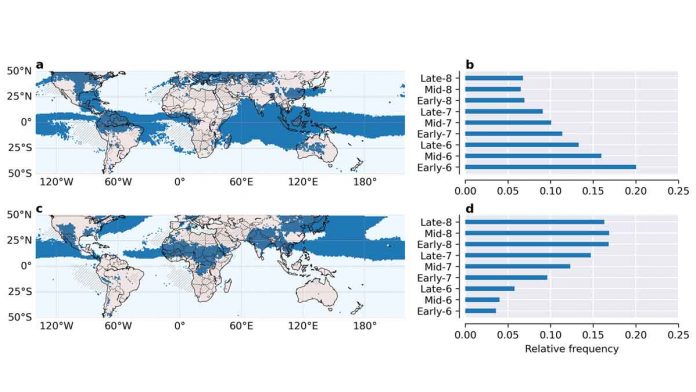Precipitation extremes are very likely to become more frequent in most locations. This is according to the Sixth Assessment Report of the Intergovernmental Panel on Climate Change released in February 2022. Exploring extreme rainfall patterns on a global scale is elevated to an issue of great societal importance.
Researchers in Germany propose using a complex network-based clustering workflow to search for synchronized structures of extreme rainfall events within the context of atmospheric chaos.
They were able to reconstruct a functional climate network to encode the underlying interaction of the climate system. Clusters on the network revealed regions of similar climatological behaviors.
Monsoons describe atmospheric circulation seasonal changes. They are distributed on different continents and their occurrences are usually accompanied by precipitation extremes. This means extreme rainfalls within different locations are not independent of each other but have a certain degree of similarity.
The global synchronization of extreme rainfall has two main distributions with independent temporal and spatial characteristics. A monsoon “jump” occurs, between these periods. It is a northward movement of the rain belt of monsoons with time.
The spatial distribution of synchronization also undergoes a northward shift, with this monsoon jump. The researchers noticed both of the spatial distributions cover monsoon regions and also oceanic and inland areas.

